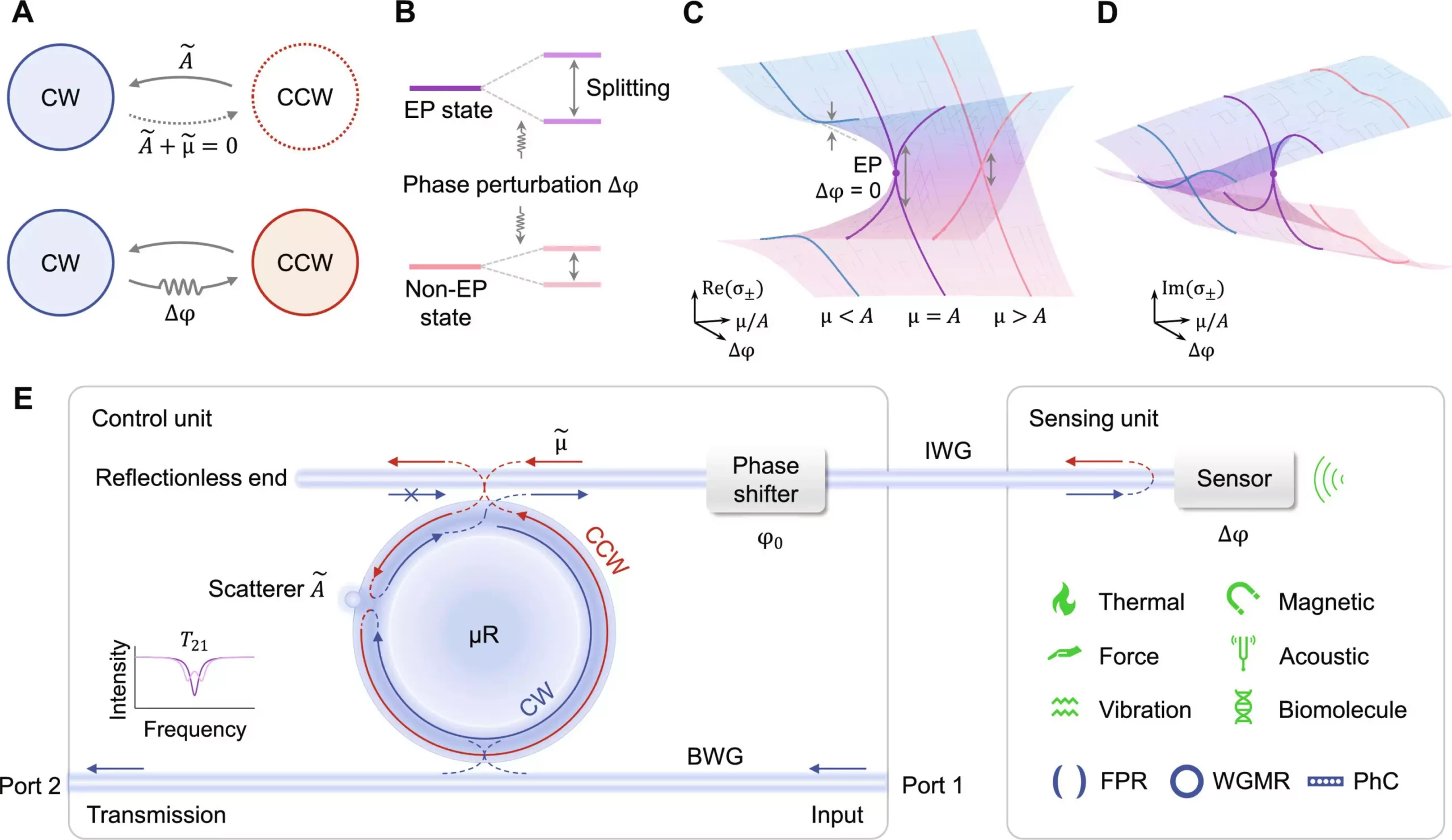Optical sensors play a crucial role in various scientific and technological fields, enabling the detection of subtle changes in the environment through the use of light. Sensitivity is a key factor in optical sensing, as it allows for the detection of faint signals in the presence of noise. Recent research by Lan Yang and Wenbo Mao from Washington University in St. Louis has introduced a novel approach to enhance the sensitivity of optical sensors using exceptional points (EPs).
Unlike traditional methods that involve modifications to the sensor itself, Yang and Mao’s EP-enhanced sensing platform features an EP control unit that can be connected to external sensors. This innovative configuration allows for the tuning of EPs through adjustments to the control unit, eliminating the need for complex modifications to the sensor. By decoupling the sensing and control functions, the researchers have overcome the physical limitations associated with operating sensors at EPs, making EP enhancement applicable to a wide range of conventional sensors.
The EP-enhanced sensing platform demonstrated a significant reduction in the detection limit of a sensor compared to conventional methods. Through their experiments, Yang and Mao showed a six-fold reduction in the detection limit, allowing for the detection of weak perturbations over system noise. This breakthrough has the potential to revolutionize the field of optical sensing by enhancing the detection capabilities of existing sensors.
The implications of EP-enhanced sensing extend beyond scientific research, with potential applications in medical diagnostics and imaging. By enhancing magnetic sensing, this technology could lead to improvements in MRI technology, reducing the dependence on elaborate temperature control systems. The ability to detect subtle changes in biological tissues could revolutionize medical imaging techniques, leading to more accurate diagnoses and treatments.
Moving forward, Yang’s team is focused on expanding the applications of EP-enhanced sensing to various fields, including environmental monitoring, health tracking, and biomedical imaging. By fine-tuning the control unit, the EP configuration can adapt to different sensing scenarios, offering unparalleled sensitivity and detection capabilities. This research represents a significant step towards making EP enhancement a standard practice in optical sensing, with far-reaching implications for scientific and technological advancements.
The utilization of exceptional points in optical sensing has the potential to transform the way we detect and analyze environmental perturbations. By harnessing the power of EPs, researchers are paving the way for advanced sensing technologies that can revolutionize various industries. The EP-enhanced sensing platform developed by Yang and Mao represents a significant breakthrough in the field of optical sensing, opening up new possibilities for enhanced sensitivity and detection capabilities. As this technology continues to evolve, we can expect to see its widespread adoption in scientific, medical, and technological applications, shaping the future of optical sensing.


Leave a Reply